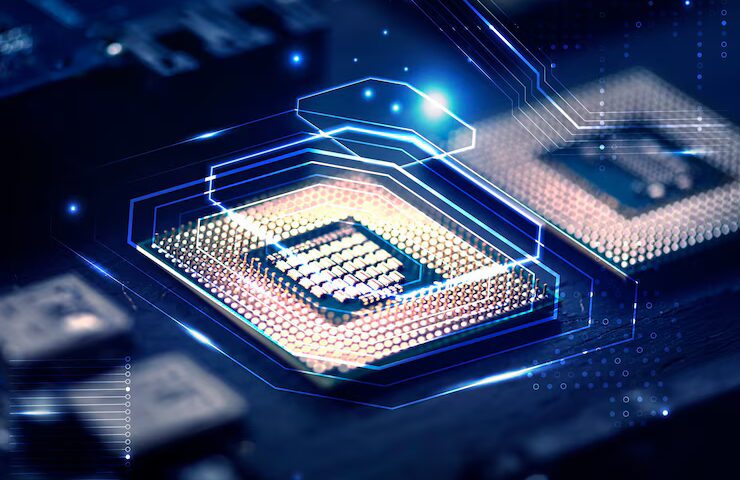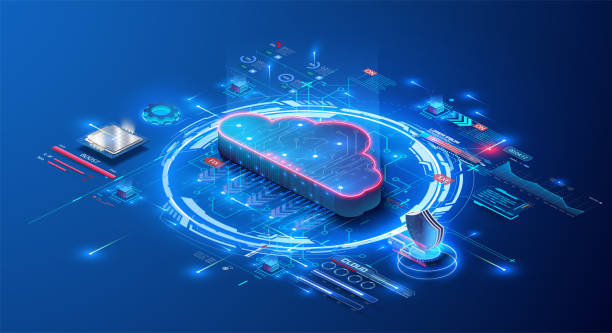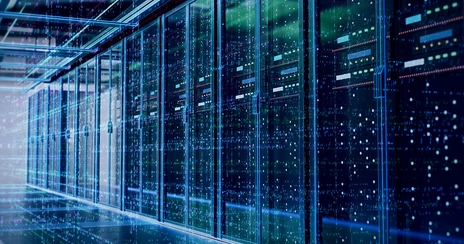In the world of computing, the Central Processing Unit (CPU) is often referred to as the “brain” of the computer. It’s where most of the calculations and instructions are processed. However, with the rise of virtualization and cloud computing, a new term has become common: the Virtual CPU (vCPU). While they sound similar and perform similar functions from the perspective of a running program, there are fundamental differences you need to understand.
Let’s break down what each term means and how they differ.
What is a CPU (Physical CPU)?
A CPU (Central Processing Unit), often called a physical CPU or processor, is a tangible hardware component located on a computer’s motherboard. It’s the actual chip that executes instructions from computer programs.
Think of it as the raw processing power machine.
Key characteristics of a Physical CPU:
- Hardware Component: It’s a physical piece of silicon and circuitry.
- Cores: Modern CPUs contain one or more “cores.” Each core is essentially an independent processing unit capable of executing instructions. A quad-core CPU, for example, has four processing cores.
- Threads: Many modern CPUs also utilize “hyper-threading” or “simultaneous multi-threading” (SMT). This technology allows a single physical core to appear as multiple logical processors (threads) to the operating system, enabling it to handle multiple tasks more efficiently by sharing the core’s resources. A quad-core CPU with hyper-threading might present as 8 logical processors (4 cores * 2 threads/core).
- Dedicated Resources: In a traditional, non-virtualized environment, the operating system running on a machine has direct and exclusive access to all the cores and threads of the physical CPU(s) installed.
- Performance: Performance is directly tied to the CPU’s clock speed, number of cores, threads, cache size, and architecture.
In simple terms: A physical CPU is the actual chip you can see and touch, containing the real processing engines (cores) that do the work.
What is a vCPU (Virtual CPU)?
A vCPU (Virtual Central Processing Unit), also known as a Virtual Processor, is an abstraction or a software representation of a physical CPU core. It’s created and managed by a hypervisor (software that enables virtualization, like VMware vSphere, Microsoft Hyper-V, KVM, or cloud platforms like AWS and Azure).
Think of it as a slice or a share of the underlying physical CPU power allocated to a specific Virtual Machine (VM).
Key characteristics of a vCPU:
- Software Abstraction: It’s not a physical component but a software construct defined by the hypervisor.
- Allocated to VMs: vCPUs are assigned to Virtual Machines. A VM running an operating system thinks it has dedicated CPUs, but it’s interacting with vCPUs presented by the hypervisor.
- Shares Physical Resources: Multiple vCPUs from different VMs typically run on the same underlying physical CPU cores. The hypervisor is responsible for scheduling and allocating time slices of the physical cores to the various vCPUs.
- Flexibility: You can easily add or remove vCPUs from a VM (within the limits of the physical hardware and hypervisor capabilities) without physically touching the server.
- Performance: A vCPU’s performance is dependent on the performance of the underlying physical core(s) and how effectively the hypervisor schedules its access to those cores. If too many vCPUs are scheduled on a limited number of physical cores, performance can suffer due to contention (known as CPU Ready time).
In simple terms, A vCPU is a virtual core given to a virtual machine by virtualization software, representing a share of the actual processing power from the physical CPU cores.
The Main Differences Summarized
Here’s a direct comparison of the key distinctions:
| Feature | Physical CPU (CPU) | Virtual CPU (vCPU) |
|---|---|---|
| Nature | Hardware component (chip) | Software abstraction/construct |
| Location | On the server’s motherboard | Exists within a Virtual Machine (VM) |
| Resource | Contains physical cores and threads | Represents a share of a physical core/thread |
| Allocation | Dedicated to the host OS or bare-metal. | Assigned to a specific VM |
| Management | Hardware procurement, installation, and BIOS settings. | Configured within the hypervisor software. |
| Elasticity | Difficult/expensive to change (hardware upgrade). | Flexible; can often be added/removed via software settings. |
| Performance | Generally predictable (limited by hardware). | It can vary based on hypervisor scheduling, contention with other vCPUs. |
| Context | Bare-metal servers, desktops, and laptops. | Virtualized environments (VMs), Cloud Computing instances. |
| Cost Model | Capital expenditure (hardware purchase). | Often operational expenditure (part of cloud cost or virtualization license). |
In essence:
- A Physical CPU is the engine itself, with its real, tangible cylinders (cores).
- A vCPU is like a reservation or an allocated time slot on one of those physical cylinders for a specific user (the VM). The hypervisor is the orchestrator, making sure everyone with a reservation gets their turn.
Why do we use vCPUs?
The concept of vCPU is fundamental to virtualization because it allows:
- Resource Sharing: Many VMs can share the powerful resources of a single physical server.
- Isolation: Each VM operates as if it has its dedicated processor(s), even though they are sharing.
- Flexibility and Scalability: Resources (including vCPUs) can be allocated or deallocated to VMs on the fly, making it easy to scale applications up or down.
- Resource Management: Hypervisors can prioritize, limit, or guarantee CPU resources to different VMs based on their needs.
- Migration: VMs (and their vCPUs) can be easily moved between physical servers for load balancing, maintenance, or failover.
Conclusion
While a vCPU represents processing power to a virtual machine, it’s crucial to remember that it’s a virtualized slice of an underlying physical CPU. Understanding the distinction between the physical hardware component (CPU) and its software abstraction (vCPU) managed by a hypervisor is key to comprehending how modern virtualized data centers and cloud computing platforms function. It highlights the shift from dedicated hardware resources to flexible, shared pools of computing power.






